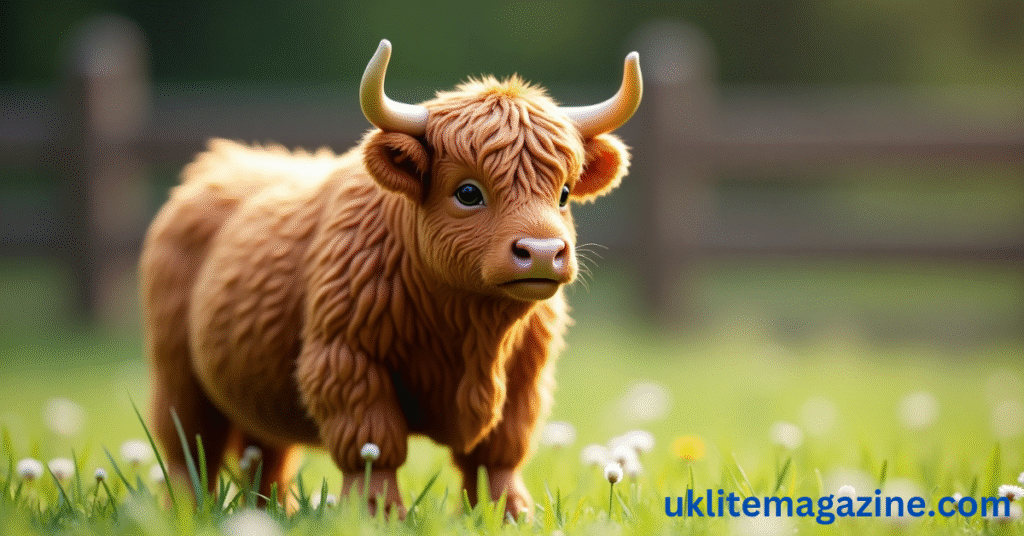Miniature Highland cows are gaining popularity among small-scale farmers and animal lovers for their adorable appearance and manageable size. These fluffy cattle are not just eye-catching; they are also hardy, friendly, and suitable for various climates. If you’re considering raising one or just want to learn more, this article explains everything you need to know about their lifespan, diet, and grooming needs.
What is a Miniature Highland Cow?
A miniature Highland cow is a smaller version of the traditional Highland cattle breed from Scotland. These cows retain the same long horns and thick coats as the standard breed, but their compact size makes them easier to manage, especially for hobby farms and small homesteads. Despite their smaller stature, they are just as resilient and charming as their full-sized counterparts.
Lifespan of a Miniature Highland Cow
Miniature Highland cows are known for their long lifespans. On average, they live between 12 and 20 years. With proper care, some can even live longer. Their longevity depends on several factors such as genetics, quality of diet, shelter, and regular veterinary care. This extended lifespan makes them a rewarding long-term commitment for owners.
Diet and Nutrition
Feeding a miniature Highland cow is relatively simple and cost-effective. They thrive on a basic diet and do not require expensive feed.
What They Eat:
-
Grass and Hay: Their primary food source. In summer, they graze on pasture. In winter, they eat hay.
-
Grain (optional): Can be given in small amounts, especially to pregnant or nursing cows for added nutrition.
-
Mineral Supplements: Salt licks or mineral blocks help maintain health and prevent deficiencies.
-
Fresh Water: Must be available at all times. Clean water is essential for digestion and overall health.
Avoid feeding them too much grain or human food, as this can lead to digestive problems and weight gain.
Grooming and Care
Miniature Highland cows have thick, double-layered coats that protect them from harsh weather. However, their coats also require regular maintenance.
Grooming Tasks:
-
Brushing: Brush 2 to 3 times a week to prevent matting and remove dirt.
-
Bathing: Only when necessary. Use a mild, animal-safe shampoo.
-
Hoof Trimming: Should be done every 6 to 12 months by a professional.
-
Parasite Checks: Regularly inspect for lice, ticks, and other parasites, especially during warmer months.
Grooming is not only for cleanliness but also strengthens the bond between you and your cow.
Quick Overview Table
| Feature | Details |
|---|---|
| Lifespan | 12 to 20 years |
| Adult Height | 36 to 42 inches at the shoulder |
| Primary Diet | Grass, hay, minerals, and fresh water |
| Grooming Needs | Regular brushing, occasional bathing, hoof care |
| Temperament | Friendly, calm, and family-friendly |
| Ideal For | Small farms, homesteads, petting zoos |
Conclusion
Miniature Highland cows are an excellent choice for those looking for a low-maintenance, gentle, and visually appealing farm animal. With a long lifespan, simple diet, and manageable grooming routine, they are perfect for small landowners, hobby farmers, or anyone interested in sustainable animal care. While they do require some attention, their calm demeanor and long-term companionship make them a rewarding investment.
Frequently Asked Questions (FAQs)
How big does a mini Highland cow get?
Miniature Highland cows typically reach a height of 36 to 42 inches at the shoulder. This compact size makes them easier to handle and suitable for small pastures or farms.
How much do miniature cows cost?
The price of a miniature Highland cow can range from $1,500 to $3,500, depending on factors like age, color, and breeder reputation. Some high-quality or rare-colored cows may cost even more.
How much does a Highland cow cost?
A standard Highland cow generally costs between $2,000 and $5,000. Miniature versions may have a higher initial price due to their popularity, but they are more economical to maintain.
What are the disadvantages of a Highland cow?
While miniature Highland cows are easier to manage than standard breeds, they do come with some challenges:
-
Require regular grooming due to their long coats
-
Need secure fencing and shelter from extreme weather
-
Possess horns, which may be intimidating for some handlers
-
Veterinary and hoof care may require expert help

